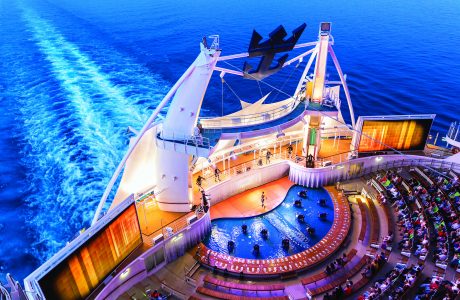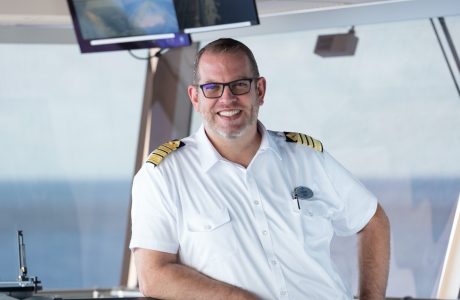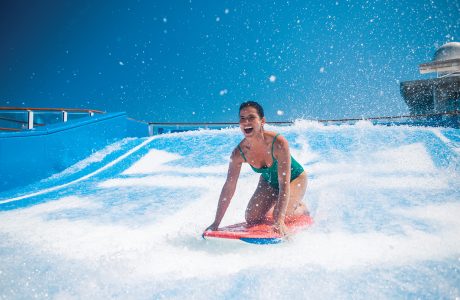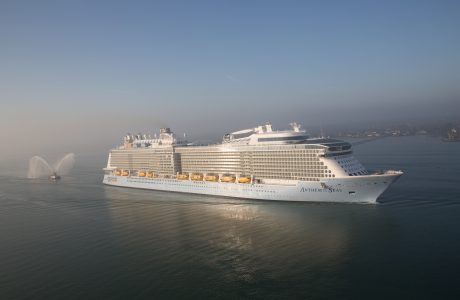First Officer Amelia Rönnblom is always looking toward the future. She is currently a 1st Officer on the bridge aboard Royal Caribbean cruise ships, and enjoys learning and searching for what’s next—whether that’s training other bridge teams or encouraging younger generations of women to make their mark on the maritime industry.
Amelia knew from a young age that she wanted to sail, but there have been challenges that have come with her life at sea. From small ships to bigger ships, and tight-knit crews to a huge extended work family, this 13-year veteran has seen the sea from all angles and is full steam ahead on her goals. Lucky for us—and you—we had the chance to ask her all about it, and she didn’t hold back.
Here is everything she had to share about her story and thoughts on navigating the industry as a woman:
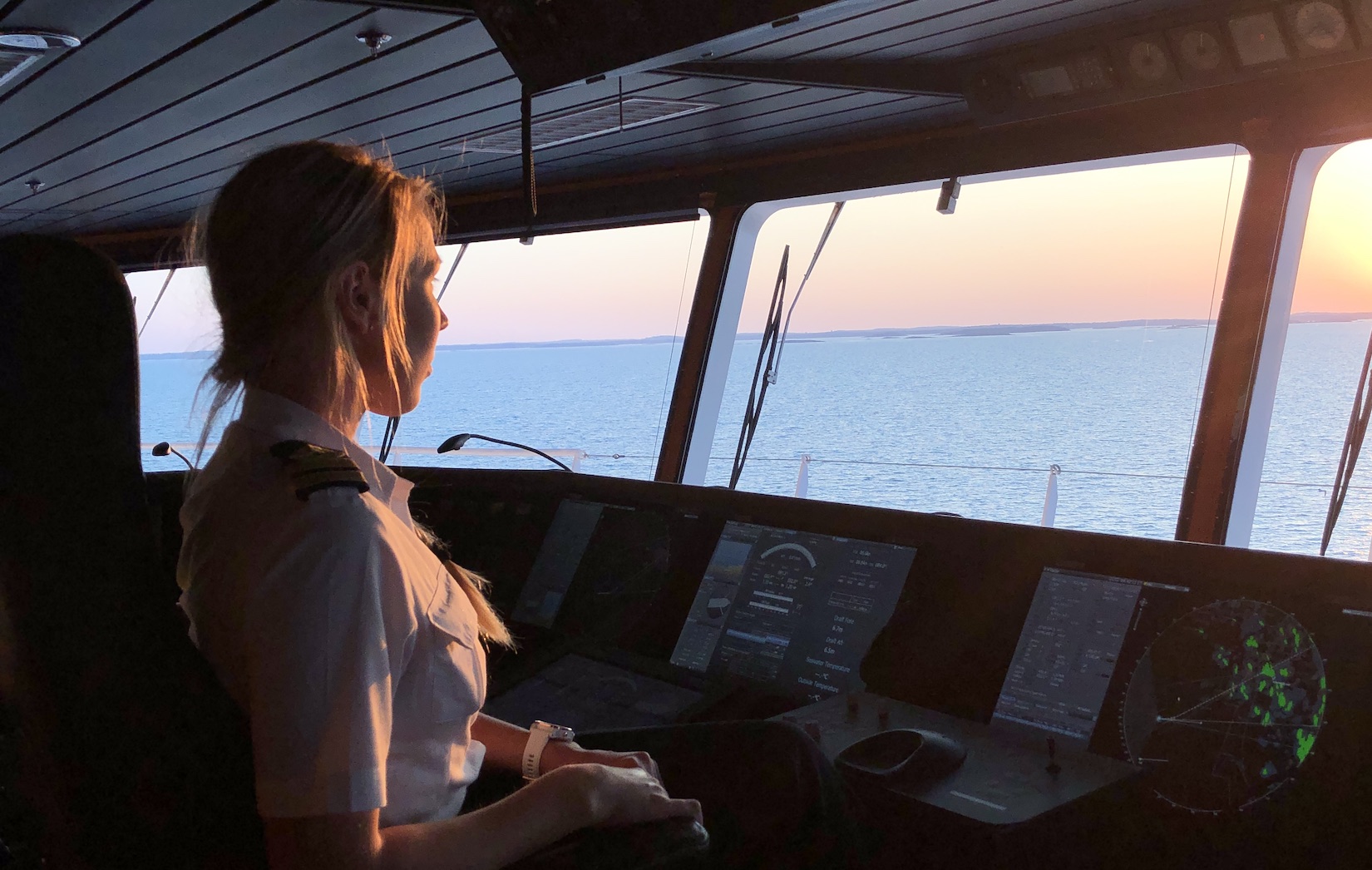
One of Amelia’s roles is to create voyage plans – the where and when of every cruise.
Credit: Amelia Rönnblom
Q: What drew you to the maritime industry?
Amelia: I grew up on an island in the archipelago of Stockholm, Sweden, where I sailed with my family every summer on our sailboat. After I joined the Sea Scouts, I knew that sitting at a desk was not for me because I was in love with the ocean. However, I did not know much about working at sea. By serendipity, I met an acquaintance who had just started studying at a maritime school in Finland, and I knew after he told me about it that I was going to move there.
Q: How did you become 1st Officer?
Amelia: I spent more than four years in two maritime schools. At 16 years old, I started at a seaman school in Finland, where I received my Officer of the Watch license. [After working on a cargo ship], I then graduated with a bachelor’s degree in nautical science from Linnaeus University in Sweden.
I’d worked on cargo ships, ferries, day cruisers and RO-PAX (roll-on, roll-off ferries) before I almost said no to the opportunity to join Royal Caribbean. I didn’t think big cruise ships would be for me at first. On cargo ships, I was used to a four-week contract; it was a big change to then spend 14 weeks on a cruise ship. At most, I’d worked with 10 to 12 crew members on any one cargo ship, and everyone was family—now my team is 10, plus an extended team of 1,650. I took a leap and made the move to Royal Caribbean in 2016 as a cadet, and I’m so glad I said yes—this fast-paced, ever-changing and challenging environment keeps me happily busy.
Q: What do you do in your role?
Amelia: Our main task is to safely navigate the ship. I am responsible for keeping all of our navigation and communication equipment up to date, and I create the ship’s voyage plans as well as communicate with the port agents and pilots at each of the destinations we visit. [The team] is also responsible for the maintenance and inspections of all portable firefighting and lifesaving equipment on the ship, as well as consistently training our fellow crew members in safety.
Pro tip: Port agents coordinate documentation between the ship and the port authority, and harbor pilots advise the ship’s crew on conditions at the port, like tides and sandbars.

Though 1st Officer Amelia didn’t think she would like to work on bigger ships, she did and never looked back.
Credit: Amelia Rönnblom
Q: How did you navigate what’s historically known as a male-dominated industry and achieve success?
Amelia: There’s a stigma, and you have to push hard—not only to do your job and break barriers but also to win the confidence of your superiors to get promoted. I believe one of the reasons it’s taking time for more women to join and make their way up in the maritime industry is because the industry is comfortable with what it knows. This is one of the reasons it is so important to show that women also belong—and excel—at sea.
Q: How important is it to have a combination of different backgrounds, perspectives and people—from gender to cultures—overall in your work?
Amelia: In my experience, the bigger the variety of gender and culture [in the workplace], the more acceptance there is. If half of the team is from the same country or has the same mother tongue, it easily builds a feeling of “us” and “them.” If the nationalities and cultures are split, everyone has the same chance of feeling that sense of belonging.
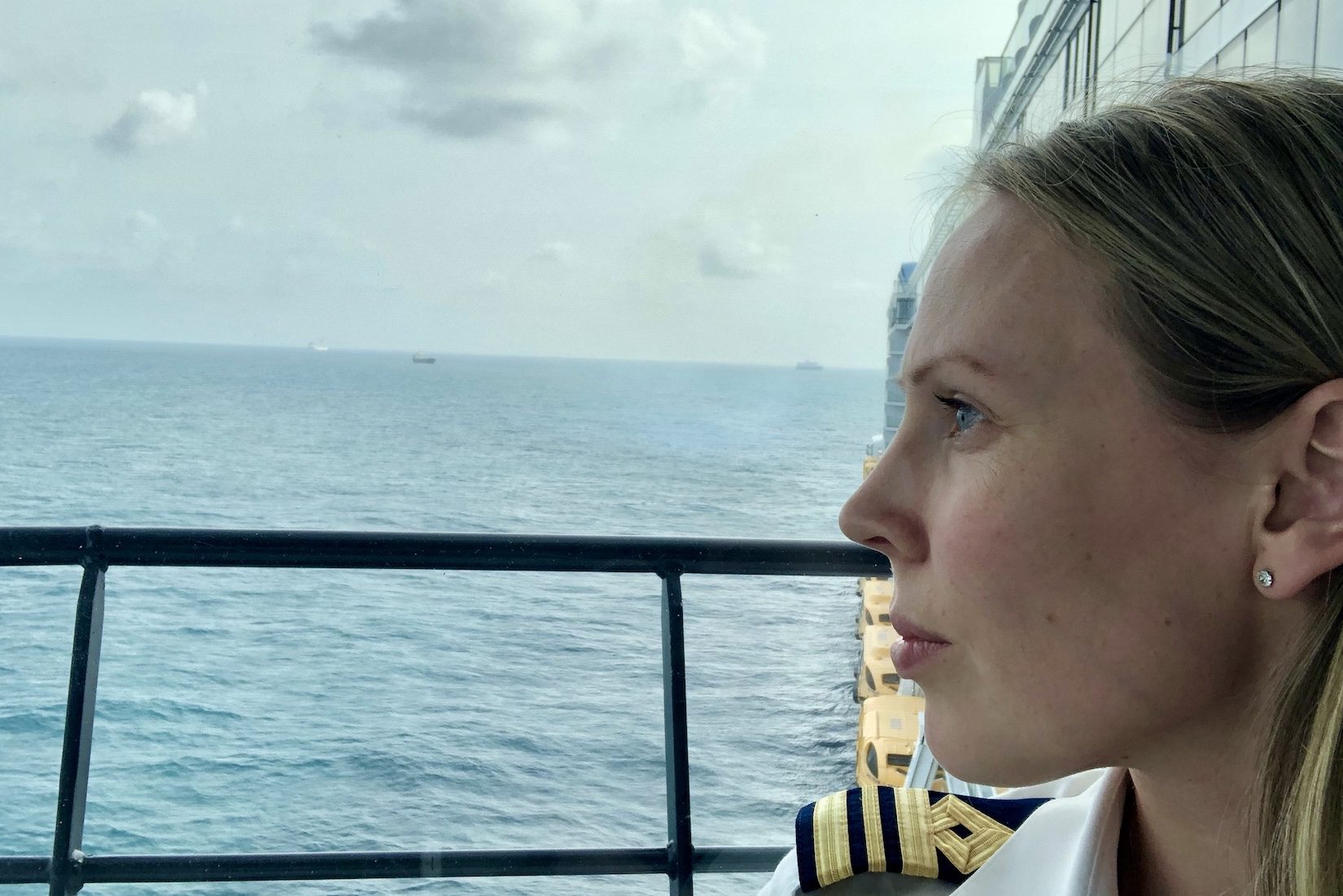
Amelia is passionate about increasing the number of women in the maritime industry.
Credit: Amelia Rönnblom
Q: What part of your job do you love the most?
Amelia: The navigation of such great ships like these. I love navigating and maneuvering ships of all sizes, so when this is on the agenda, my eyes light up and I can’t stop smiling
Q: What are your future career goals?
Amelia: I have always been curious and loved to learn. Currently, I am curious about navigational training, which is when you visit different ships and train the bridge team on the navigation equipment. Further ahead, I hope I can work in a position coaching and supporting younger generations.
Q: What advice would you give to young women who are considering pursuing a career in the maritime industry?
Amelia: Stay strong. It won’t always be easy, but the rewards for you, me and the women after us can be great.
When you’re ready to set sail with 1st Officer Amelia and her fellow team members, head here to choose your Royal Caribbean cruise.

